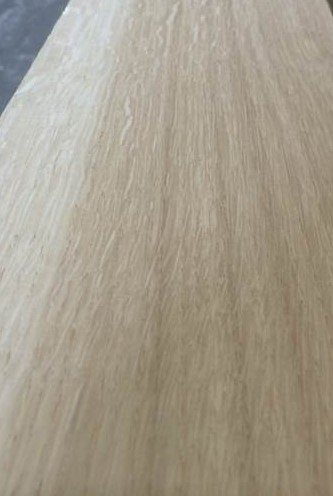 White Oak, "Quercus Alba", is one of the most commonly used North American hardwood lumber species today. It can be found in cabinets, flooring, furniture, doors, barrels, millwork, mouldings, etc. It is strong, water resistant, and has excellent working properties. It is also one of the more commonly requested species to be sawn as rift and quartered.
White Oak, "Quercus Alba", is one of the most commonly used North American hardwood lumber species today. It can be found in cabinets, flooring, furniture, doors, barrels, millwork, mouldings, etc. It is strong, water resistant, and has excellent working properties. It is also one of the more commonly requested species to be sawn as rift and quartered.This happens because many times the special grain presentation that rift and quartered offers, is appealing to designers and architects to achieve a special look they are pursuing. Many times, rift and quartered white oak can be known to be expensive and hard to find. But why?
In general, there are three ways sawmills usually cut white oak. The first one is flat sawn or plain sawn which is the most common cutting technique. When used in cabinets or in flooring this presents a grain pattern that is peaked or what is sometimes referred to as a cathedral pattern. Flat sawn manufacturing allows the sawmill to maximize yield and create lumber more efficiently.
Quarter-sawing and rift-sawing are two other sawing techniques. The rift and quartered sawing technique requires a unique sawing pattern that is not the most efficient for cutting a log. It requires the sawyer to spend more time handling each log and typically creates 50% more waste compared to a flat sawing pattern. Because of this, rift and quartered lumber is known to be more expensive and harder to find since fewer sawmills cut logs this way.
Rift and quartered lumber, although sawn slightly differently, are usually manufactured together as compliments of one another. Rift sawn lumber, also known as straight grain, is cut at the sawmill with the grains intersecting the face of the board at an angle between 30 and 60 degrees and quarter sawn lumber is cut with the grains intersecting the face board the board at an angle between 60 and 90 degrees. Both of these sawing techniques produce boards with a straight or linear grain pattern throughout the board.
To accomplish this, the log is sawn into four quarters, (hence the name quarter sawn), and each quarter of the log is sawn perpendicular to the growth rings.
Another important attribute of rift and quartered lumber is the presentation of medullary rays. Medullary rays are cellular structures found in woods. These consist of small capillaries inside the wood that run from the center of the tree to the outer growth ring. They create a visual ribbon like effect on the lumber when sawn. When White Oak is quarter sawn its medullary rays can be very apparent and many times are desirable because it introduces a distinct wavy visual effect to the lumber that is known as “flecking”. It is important to note that this only appears in quarter sawn lumber. In rift sawn lumber there is no flecking effect from the medullary rays, but there is still a unique straight grain appearance on both sides of the board.
 Another reason rift and quartered lumber is available at a premium is because it is commonly known to be more stable. In general, lumber adjusts to the climate that it is in by regularly absorbing and releasing moisture from the environment. This causes lumber to expand and contract. When lumber is rift and quartered and sawn perpendicular to its growth rings, any shrinkage or expansion of the lumber is greatest in thickness, is less in width and is less prone to cupping or splitting making it very desirable for manufacturing furniture, windows, instruments and flooring.
Another reason rift and quartered lumber is available at a premium is because it is commonly known to be more stable. In general, lumber adjusts to the climate that it is in by regularly absorbing and releasing moisture from the environment. This causes lumber to expand and contract. When lumber is rift and quartered and sawn perpendicular to its growth rings, any shrinkage or expansion of the lumber is greatest in thickness, is less in width and is less prone to cupping or splitting making it very desirable for manufacturing furniture, windows, instruments and flooring.
Today, White Oak is the most common, but not the only specie provided as rift and quartered. Sawmills can cut any species in this manner. However, it is usually only found on a regular basis in White Oak, Red Oak, Cherry, Hard Maple, Ash, and some of the imported tropical species like African Mahogany and Sapele.
Baillie Lumber regularly has rift and quartered lumber in stock. If you are in need of this type of special product, let us know. We would be happy to search our current inventory listings and what might be coming out of the kilns.
Tony Cimorelli
Baillie Lumber

